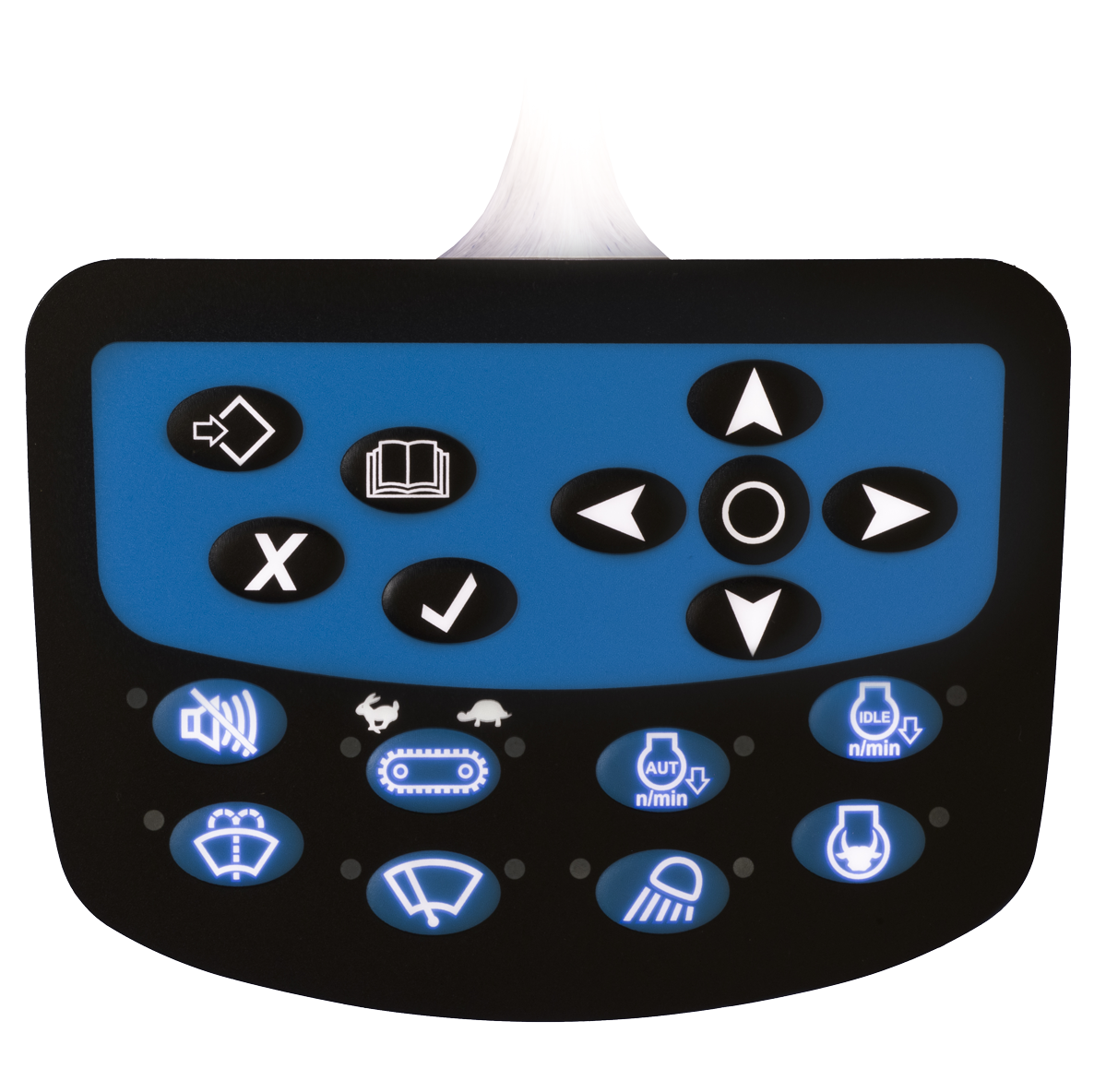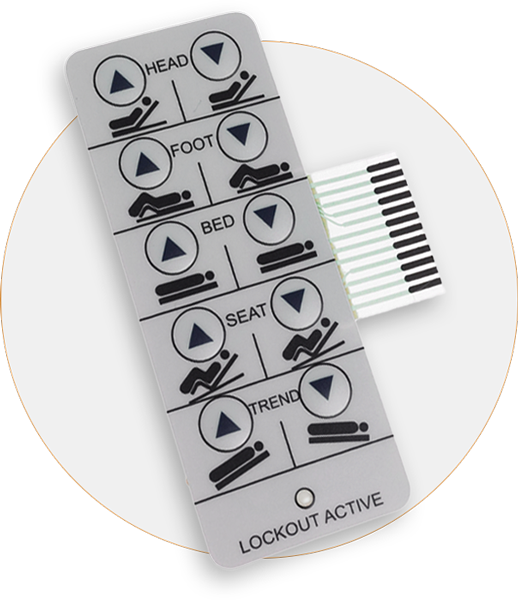Membrane Switches vs. Traditional Switches: What You Need to Know
Membrane Switches vs. Traditional Switches: What You Need to Know
Blog Article
Membrane Switch Innovation: The Trick to Reliable and Cost-Effective Interfaces
Membrane layer switch technology has arised as a crucial element in the design of customer interfaces, offering both reliability and cost-effectiveness throughout a diverse array of applications. As we check out the multifaceted benefits of membrane buttons, their possibility for advancement raises inquiries about future applications and advancing patterns.
Recognizing Membrane Change Innovation
Membrane switch modern technology is a commonly made use of interface remedy in different digital devices, using a seamless blend of functionality and style. This modern technology integrates numerous layers of materials, normally including a graphic overlay, spacer layer, and a circuit layer. The visuals overlay displays the interface components, while the spacer layer separates the circuit layer from the overlay up until a customer activates a button.
When stress is applied to the overlay, the circuit layer completes the electric circuit, sending out a signal to the device. This system enables different configurations, consisting of tactile feedback and backlighting choices, boosting user interaction. Membrane buttons are generally manufactured utilizing sturdy materials such as polyester or polycarbonate, guaranteeing durability and resistance to ecological variables like dampness and dirt.
The versatility of membrane changes enables their application in diverse markets, consisting of clinical devices, consumer electronics, and industrial controls. Their compact design permits for assimilation into space-constrained environments, providing an efficient interface without compromising visual allure. Recognizing the details of membrane layer button modern technology is crucial for manufacturers and designers seeking to create dependable and effective human-machine interfaces.
Key Advantages of Membrane Layer Switches
While various user interface remedies exist, membrane layer changes deal distinctive benefits that make them a favored choice in numerous applications. Among the key advantages is their durability; membrane layer buttons are developed to endure harsh ecological conditions, consisting of wetness, dust, and temperature fluctuations, ensuring durable performance. This durability considerably reduces the demand for regular replacements, therefore decreasing total maintenance prices.

In addition, membrane buttons are lightweight and compact, making them suitable for applications where room is restricted. Their low-profile layout adds to a sleek appearance without endangering capability.
Cost-effectiveness is also a noteworthy benefit, as the manufacturing process for membrane layer switches over often tends to be much less pricey compared to conventional mechanical buttons. This price, incorporated with their integrity and convenience of installation, positions membrane switches over as a practical solution for a vast array of industries seeking efficient and reliable customer interfaces.
Applications Across Various Industries
Exactly how do membrane switches adapt to the diverse requirements of different markets? Membrane button modern technology is significantly recognized for its flexibility, making it suitable for a large range of applications throughout numerous fields. In the clinical area, membrane layer buttons are used More hints in diagnostic tools and person tracking tools, where their longevity and convenience of cleansing are vital for maintaining health requirements. The automobile sector employs these buttons in control panels and control board, using a streamlined visual while making certain user-friendly operation.
In consumer electronics, membrane layer switches offer a compact option for remote controls and home appliances, improving user experience with instinctive design. Furthermore, the commercial sector leverages membrane buttons for machinery control panels, gaining from their resistance to harsh environments, such as wetness and dirt.
Army and aerospace applications likewise make use of membrane layer switches for their reliability and capability to stand up to severe problems, making certain operational effectiveness in important scenarios. Moreover, the food and drink sector adopts these switches for automated systems, where cleanliness and ease of operation are vital. Eventually, membrane switches are customized to fulfill the unique demands of each industry, showing their important function in contemporary innovation user interfaces
Layout and Modification Options

In the world of membrane layer button modern technology, layout and modification alternatives play a crucial duty in boosting capability and customer communication. These buttons can be tailored to meet particular operational requirements and visual choices, making them flexible elements in various applications.
One of the key modification choices is the layout of the switch itself, which can be made to suit special interface and ergonomic considerations. By readjusting the form, size, and arrangement of switches, makers can produce intuitive styles that assist in ease of usage. In addition, the consolidation of different shades and graphic overlays permits branding and enhanced visibility, ensuring that customers can swiftly identify features.
Furthermore, membrane layer switches can be engineered with various tactile responses systems, such as elevated buttons or distinct clicks, to improve discover this the customer experience. Different materials can likewise be selected for longevity and ecological resistance, dealing with factors such as wetness, temperature variations, and chemical exposure.
Eventually, the extensive layout and personalization alternatives offered in membrane layer switch innovation encourage businesses to create tailored remedies that not only meet practical needs yet also align with their branding and functional demands.

Future Fads in Membrane Layer Buttons
As membrane button innovation proceeds to advance, future fads are progressively concentrated on enhancing user experience and integrating sophisticated performances. One substantial fad is the integration of touch-sensitive and capacitive innovations into standard membrane layer switches. This development enables for more intuitive More hints customer interfaces, giving responsive responses while maintaining a sleek design.
One more emerging pattern is making use of ecologically pleasant products, driven by the expanding need for lasting manufacturing methods. Makers are looking for to minimize their carbon footprint by using recyclable substrates and low-impact inks, lining up with worldwide sustainability goals.
Furthermore, the rise of the Internet of Points (IoT) is motivating the unification of clever attributes right into membrane switches. Enhanced connection alternatives will certainly make it possible for gadgets to interact with each other, enabling smooth assimilation into wider systems.
In addition, developments in printing innovations, such as digital printing, are permitting for better style flexibility and modification. This allows makers to create intricate layouts and lively colors cost-effectively.

Verdict
In verdict, membrane layer switch innovation represents an essential technology in user interface style, supplying significant advantages in durability, customization, and cost-effectiveness. As improvements proceed to emerge, particularly in touch-sensitive interfaces and lasting products, the possibility for membrane switches over to enhance individual experience and capability continues to be promising.
Report this page